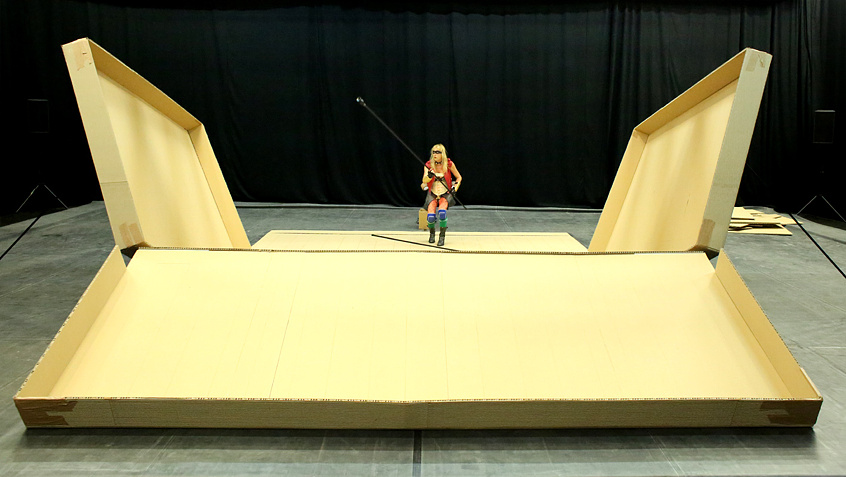Phia Ménard’s movement and gesture work deals with mutation, trans-portation, and transition between preestablished genders and genres: from straight to queer, from masculinity to femininity, from popular art to fine art, from circus and jonglerie to dance, from mime to performance art. This displaced practice cannot be defined simply as dance or theater; rather, it is an exploration and dismantling of the political status of performative action and the limits between the biological and the theatrical body.
In 1998, at age twenty-seven, Ménard founded the company Non Nova, which aimed to transform juggling and mime by opening them up to the language of contemporary art. The group claimed the status of art for these “lesser” forms while defending and extolling the circus’s closeness to working-class culture, as well as to the popular codes of festivals and vaudeville. Ménard’s gender transition in 2008 led to a redefinition of her theatrical language, emphasizing impermanence in the face of the stiff, inflexible stage. Her transitioning performances involve encounters of the artist’s body with raw materials in a state of transformation.
In P. P. P. (2008), created when Ménard began taking hormones, she confronts ice as it moves from its threatening, solid state into one of complete fluidity, juggling 120 balls of ice, each weighing two kilos. As with the taking of hormones, biochemical and material precision is key: a little heavier and the balls of ice would be enough to injure her, a little less and they would too quickly melt. In L’après-midi d’un foehn (Afternoon of a Foehn) and Vortex (both 2011), Ménard adjusts an invisible element, air, in performances involving a circle of fans, floating plastic bags, and billows of sheeting. In Belle d’hier (Yesterday’s beauty, 2015), a piece for five ballet dancers, she stays inside a subzero freezer locker for several hours, working on the frozen dresses that are used during the one-and-a-half-hour performance. If the first works Ménard made after 2008 explored gender transition as a material, biopolitical process—fighting against ice as one fights against imposed sexual and political identities—the most recent work deepens a critique of hetero-patriarchal conventions and bears witness to a new transfeminist aesthetic.
—Paul B. Preciado


